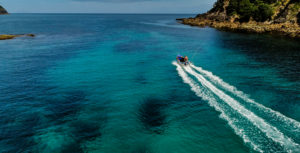Fisheries Management FAQs
All FAQs |
Customary Fisheries | Fisheries Management | maximum sustainable yield | QMS | Economics | Fishing | Rescue Fish | Environment | Fishing methods | Recreational Fishing | Fishcare | customary | Kahawai | Reform scam | Baitfish | Scallops | Crayfish | WRC decision | Marlin | Reef fish
November 2, 2020
Embarrassment. In 2014 fisheries officials discussed the merits of releasing or not releasing damning evidence of illegal and wasteful practices by commercial fishers. They discussed the potential backlash if the evidence was withheld by the Ministry and later discovered and made public. The 2016 report by Michael Heron QC details this discussion in relation to ... Read more.
November 2, 2020
The Minister of Fisheries has a statutory obligation to ‘ensure sustainability’. He needs to know how many fish to set aside to account for expected mortality before he can allocate any fish for commercial catch. More cautious catch limits need to be set when there is greater uncertainty around mortality levels.
November 2, 2020
When setting total catch limits for a particular fishery, the Minister of Fisheries sets aside a tonnage of fish to allow for the mortality caused by all fishing. This could be fish killed by trawling and other methods, fish that drop out of nets and unseen mortality, fish that die after fishing has occurred. This ... Read more.
May 29, 2020
Independent analysis by the NZ Institute of Economic Research shows that on the information available Māori own around 40% of quota shares (by volume) but only 10.7% of the total quota share value. This is a conservative estimate of iwi ownership and value because not all the relevant details are available; that is understandable given ... Read more.
August 23, 2018
The recent stock assessment suggests that the Snapper 1 stock has doubled from its low point of the 1990s, so it can be argued that it has rebuilt. That is the problem with language like this – what does rebuilt mean? It suggests a fully rebuilt stock would be back at an unfished biomass. The ... Read more.
August 23, 2018
The Fisheries Management Area 1 policy is a document developed by the New Zealand Sport Fishing Council and it applies to the area between North Cape and the eastern Bay of Plenty. LegaSea is promoting this policy as a way of providing future generations the fishing opportunities and marine resources we so gratefully inherited. Historic ... Read more.
August 23, 2018
The Gurnard 2 policy is a document developed by the New Zealand Sport Fishing Council and it applies to the area between East Cape and Wellington. LegaSea is promoting this policy as a way of providing future generations the fishing opportunities and marine resources we so gratefully inherited. Gurnard used to be a staple recreational ... Read more.
 August 23, 2018
Has the government leased out the area off upper North Island to enable commercial fishers to take sardines and mackerel with no limits? LegaSea comments No. Sardine-Pilchard The sardine we have in New Zealand is commonly called Pilchard. They were bought into the Quota System about 10 years ago. The New Zealand Sport Fishing Council ... Read more.
August 23, 2018
LegaSea believes the ‘land-all catch’ policy proposed by Fisheries New Zealand fails to achieve its primary purpose – that landed commercial catch will equate to what is actually caught at sea. This is a misdirected attempt at curbing the damage inflicted by inshore trawlers. Our latest submission on a land-all catch policy was made in ... Read more.
August 23, 2018
A land-all catch policy is variously promoted as a way of reducing recreational fishing activity and related mortality, assuming that once the bag limit is caught the person will stop fishing. There are good reasons why LegaSea does not support a land-all catch policy being applied to recreational fishing, including the following – People will ... Read more.
August 23, 2018
Has the government leased out the area off upper North Island to enable commercial fishers to take sardines and mackerel with no limits? LegaSea comments No. Sardine-Pilchard The sardine we have in New Zealand is commonly called Pilchard. They were bought into the Quota System about 10 years ago. The New Zealand Sport Fishing Council ... Read more.
August 23, 2018
LegaSea believes the ‘land-all catch’ policy proposed by Fisheries New Zealand fails to achieve its primary purpose – that landed commercial catch will equate to what is actually caught at sea. This is a misdirected attempt at curbing the damage inflicted by inshore trawlers. Our latest submission on a land-all catch policy was made in ... Read more.
August 23, 2018
A land-all catch policy is variously promoted as a way of reducing recreational fishing activity and related mortality, assuming that once the bag limit is caught the person will stop fishing. There are good reasons why LegaSea does not support a land-all catch policy being applied to recreational fishing, including the following – People will ... Read more.


